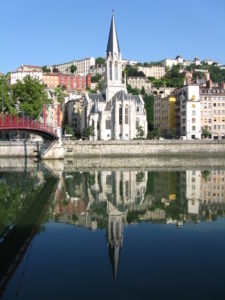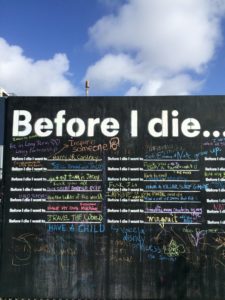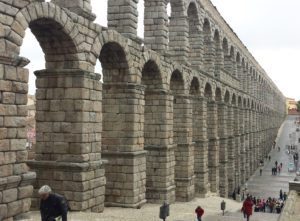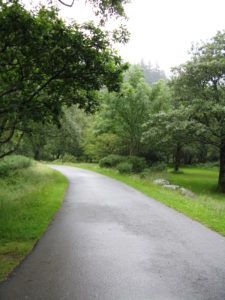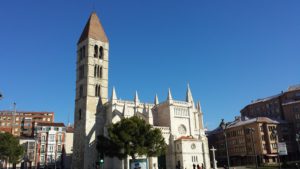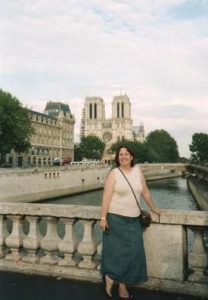Prague is the town you picture when you read a fairy tale. The last thing I expected was to step into a fairy tale of my very own.
Sure, friends had been telling me to go, that I would like it. They talked about the architecture, waxed poetic about the history, and more than one slyly mentioned how affordable it really was. Oh, and there was also the beer. They always mentioned the beer.
Prague was on the list, sure, but it isn’t exactly the easiest place to get to from Portland, Oregon. Honestly, few places are, but Prague was a particular challenge requiring at least two changes of plane and the real possibility of a long layover. So Prague stayed on the list, a wistful sigh in the asterisk I mentally had placed next to it.
Jumping at A Chance
A business trip to Krakow, Poland turned the asterisk into a check box. It was, after all, close by; at least in the way that San Diego is close to Las Vegas – about 5 hours by car. I am a West Coast American, and such distances are eminently reasonable in our oddly shaped view.
A little research led me to a train between the two cities, and I do love a good train ride. The train ride turned out to be an early morning bus to the town of Bohumín, just across the Czech border, and then a train to Prague.
I arrived late afternoon, tired from a week of work stress and in desperate need of new travels. I hauled my rolling bag from the train station through the wet and cold streets of Prague (did I mention that it was January? It was January) to my hotel on the edge of the Old Town.
Even in that state, as exhausted as I was, I had a feeling about this city. There is an energy that is undeniable. Maybe it is the trams, maybe it is the ubiquitous coffee shops I passed, but the place seems to hum.
Prague in Snow
Morning broke with a dusting of snow, being kept firmly in place by the confetti flakes that continued to fall off and on throughout the morning. Prague is a beautiful place where you feel as though you have stepped back in time. The snow turned it all into something from an Eastern European fairy tale, and at any moment you expected an ornate carriage drawn by a team of elegant horses to emerge from a side street.
By afternoon the clouds had given way to brilliant sunshine and the place seemed to sparkle. History is everywhere. People are also everywhere. It seems it doesn’t matter the time of year; there will always be crowds in Prague. Even on a snowy weekend in January.
It was a perfect day to just wander. Wander through the Old Town Square, wander into churches or stores or coffee shops, wander down side streets, just wander wherever my interests might take me. This is one of the great joys of solo travel. You get to go where you wish, without negotiating with a travel partner about how we might miss this museum or that tour. Wandering, as a result, is high on my list of things to do when I stumble upon a place that calls for it.
Feast for the Eyes
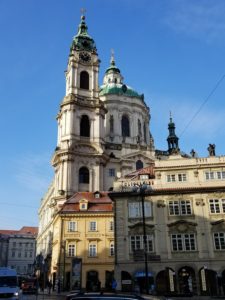
Spires and Wedding Cakes, Prague is a feast for the eyes – St. Nicholas Bell tower looms up over an architectural wedding cake.
Prague is a storybook city, with sherbet-colored buildings set next to architectural wedding cakes and medieval spires; statues and pillars, towers and bridges, and of course a castle. Because it can’t be a storybook city without a castle.
All the best cities have castles, I think. Krakow has one, Edinburgh, Dublin, Hvar, Segovia – yep, all the best places have castles.
My wanderings led me, finally, across the famed Charles Bridge. It was a cold day to cross the river, the wind that blew across was nicely frigid and yet I don’t think any of us who were out and about (which felt like ALL of us) cared. Prague was the belle of the ball and we all wanted to be next to her.
The next day was a workday Monday in Prague. The hordes of tourists were either sleeping in (given the availability of clubs in this city, it is not a leap to imagine that), or on to the next city, or perhaps even back to work themselves.
Encounter on the Charles Bridge
This was the day to visit the castle. Crossing the Charles Bridge again that morning bordered on the theatrical. Dodging the dog walkers and the remaining tourists and the usual suspects of people heading too or fro from work or the shops or errands, I stumbled forward bumping into an elegant gentleman who may or may not have been a priest.
He was something out of central casting for Eastern European Enigma – graying temples accenting jet black hair, swept back; long black wool cape that sort of swirled as he walked, and a tendency to stop at each statue on the bridge to explain its significance to his companion, often with emphatic arm gestures. He swept me bow of apology without missing a beat as I stumbled backwards and stammered.
This is not something that happens anywhere else, but of course it would in a place like Prague.
Coffee and Writers
Before the hill climb to the castle, I stopped for coffee and croissant in, of all places, a Starbucks. This building once housed a cafe where literary luminaries such as Jan Neruda used to hang out. Now it is populated by tourists, serious-looking young people with computers and that morning it even had a solo traveler from the States who still couldn’t quite believe she was there.
Fortified by strong coffee and a decent apple pastry, it was time to gird myself for the ascent to the Castle. It is a bit of a breathless climb as steps and steps and steps seem to never end. I found myself stopping at intersections, broader expanses that allowed me to catch my breath, turn around and be presented with unbelievable vistas.
New World Street
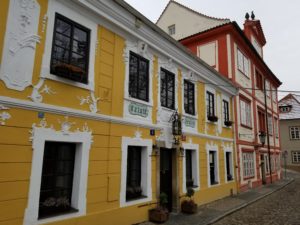
New World Street in the Castle District.
On the advice of a friend, I detoured past the Castle, heading down a curving lane looking for New World Street – Nový svět. Once again I had stepped back in time. This little cobbled street seems like it is on the very edge of the city. Narrow, and quiet, one side is buildings, the other seems to be forest, but it is a park.
The buildings are bright yellows and reds with lots of decoration around the windows and alongside the doors.
On one a large brass plate told me that Tycho de Brahe once lived there. Tycho de Brahe, a famous Danish mathematician and astronomer lived in this house in the early 1600’s.
I thought of my Dad, the grandson of a Danish Immigrant and I had to smile. Dad had passed away just a few months before, and this discovery felt like a little Easter egg left for me by this city.
Prague Castle
Back at the Castle, I splurged on the extra charge to take the English language tour of St. Vitus. A lovely woman led our little group and she did an amazing job. I learned, for example, that the church is both old and new. It was started in 1344 and finished 600 years later. Six hundred years to finish one building.
In between start and finish, Holy Roman Emperors and Bohemian Kings have been laid to rest there. There are coats of arms and a royal box, there are ornate elevated pulpits, and there is the most over- the-top and curiously beautiful tomb I have ever seen.
This is the tomb of St. John Nepomuk, and it is awash in angels, covered in silver and even has a sculpted canopy. I learned that the statue I kept seeing of a man with a halo of stars is St. John. He is found everywhere in Prague, from the Charles Bridge to various church yards.
I also learned that this church is not heated. It was a bitterly cold day and we were all hunched into our coats, but the stories were fascinating so we tried our best to ignore it. By the time I was done touring the Castle, I was cold and tired – and yet I found myself walking back to my hotel on the edge of the Old Town (the far edge from the Castle as it turns out). It was unthinkable to miss this walk across the city.
A Taste of Prague
That evening I found the website for “Taste of Prague” tours and was instantly intrigued. Food, for me, is the downside of solo travel. While I long ago got past any qualms about dining alone, I am notoriously bad at making food decisions on my own – to wit, I had ended up at Starbucks in a city known for coffee shops.
I had one day left and so I dropped them an email to see if there was an opening. Within minutes I had secured a spot on the “Prague Foodie Tour” the next evening. The reservation came with the warning that I should come hungry.
I took them at their word and met the group the following evening. The tour started with a brief history of food in the region. Prague was once part of the Austro-Hungarian Empire, with all that such a regal history implies.
The cuisine of that era reflected the breadth and depth of that empire. Influences from Vienna, Budapest, Dubrovnik (itself once part of the Venetian realm), and really all of Central and Eastern Europe, could be found in the food. Dainty open-faced sandwiches, hearty goulashes, and decadent pastries were common.
Time Travel with Food
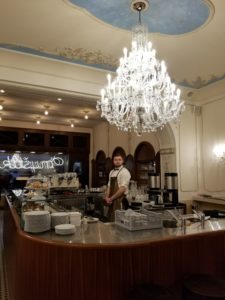
Lobby of Mysak – stepping inside means stepping back in time.
A small group of us, along with our guide Martin. started outside a gorgeous building, a confection of a place in rose and gray. It stands out on the street with its fanciful pilasters, showy granite panels framing the doors, and the flirty arches over the roof gables. This was the home of Mysak, a café that started life as a bakery. This is one of the finest examples of the unique Cubist architecture that is found only in the Czech Republic.
Stepping inside Mysak felt like stepping back to the Golden Age of Vienna. From the chandelier in the lobby to the elegant dining room upstairs, everything spoke to me of a long-ago era.
I was no longer a middle-aged woman from Portland; I was an aristocrat in the early 1900s having dinner with friends.
Waiters in period clothing – white shirts, black vests, bow ties, and long, knee-length aprons – brought us each a beautiful plate with an open-faced prawn sandwich and a “venecek,” a choux pastry with vanilla cream and sugar glaze.
The venecek puts an éclair to shame, to be honest; and like the café itself, the food was a work of art. It was easy to picture the scene in the early part of the 20th century, gracious gentlemen and lovely ladies having a civilized meal and stimulating conversation.
Common Cookbooks
Martin gave us a little history lesson about life under Communist rule. I discovered that my notion of having everything regulated by the government never touched on having everything regulated, even something as common as a restaurant or cafe.
Martin explained that there were four categories of restaurant “allowed” during this time. Category I was the luxury category, IV was the fast food equivalent. Worse still, each category had a common cookbook of recipes to draw from, so each menu was pretty much the same. Even the weight of each portion was regulated.
This meant that after the fall of communism, the food culture had to be rebuilt. I began to understand why no one who had raved about Prague had raved about the food. Until fairly recently there wasn’t a lot of food to rave about. I wondered if they didn’t know what they were missing.
History Along the Way
After a brief stop in Wenceslas Square to learn a bit about the Velvet Revolution (the jingling of key chains to tell the Russians it was time for them to go home, may possibly be the most polite demonstration ever), we took a detour through the main post office.
This beautiful building was once an apothecary, complete with botanical garden of healing plants. The garden still exists, as do some murals; and yet it is also a bustling post office. It is stunning, both in the scale of the building and the art work that remains.
Then it was time for more food. This time at the spacious Kantyna at the edge of the New Town; a combination butcher shop and restaurant. The entrance is the butcher shop with a beautiful display case. The evening was moving into the European dinner hour, and it was obvious that many of the people in the lobby area were picking up something to take home for dinner.
Kantyna has an interesting setup. When you arrive and are shown to your seat – or in our case, the large communal marble top table in the middle of a central room – you are given a slip of paper. What you order, when you order, is marked down on this ticket. You can order from the case and have your choice cooked to order, there is a hot buffet with prepared dishes, and a well stocked bar.
From there it was on to a beer hall called Lokal to drink like real Czechs – which means Pilsner Urquell in large quantities. This was chased with schnitzel, more latkes, and fermented cheese. Yes, fermented cheese.
Karlin District
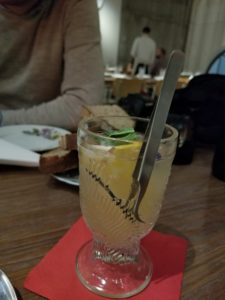
Gin and Tonic at Eska – cocktail as salad
The next stop was in the up and coming Karlin District. A short tram ride took us to this once industrial area that is now home to quirky boutique hotels, hip restaurants and cozy bars.
We finished the evening at a Scandinavian inspired restaurant called Eska. It is Czech comfort food brought into the modern world. A gin and tonic that was half cocktail, half salad was one of the highlights – even the gin is made on site. This Portland foodie was in heaven by the time we were done.
Breaking the Spell
On the short tram ride back to my hotel I thought about all the little things. The jazz band in the square playing Sweet Georgia Brown, the little design shop where I bought a notebook and pencils for a friend, the Military Church I stumbled upon.
In the morning I was headed to Amsterdam, and then back home. It felt all the world to me like this had been a farewell dinner spent with good friends. I didn’t want the evening to end; I didn’t want this visit to end. Sleep was not something I sought that night, staying awake seemed the only way to delay the inevitable.
Finally, I hauled my bags to the waiting cab and distracted myself by taking in everything outside the window as we drove. At the airport I found a quiet corner where I waited for my flight to be called. To my surprise, I found that I was fighting back tears. I didn’t want to leave this place.
I had lived in a fairy tale for a few days in this magical city – of course I never wanted it to end.
